Sounds of Life: Senior Thesis Exhibition Review – Evelyn Solis (Fall 2021)
By: Chad Troyer
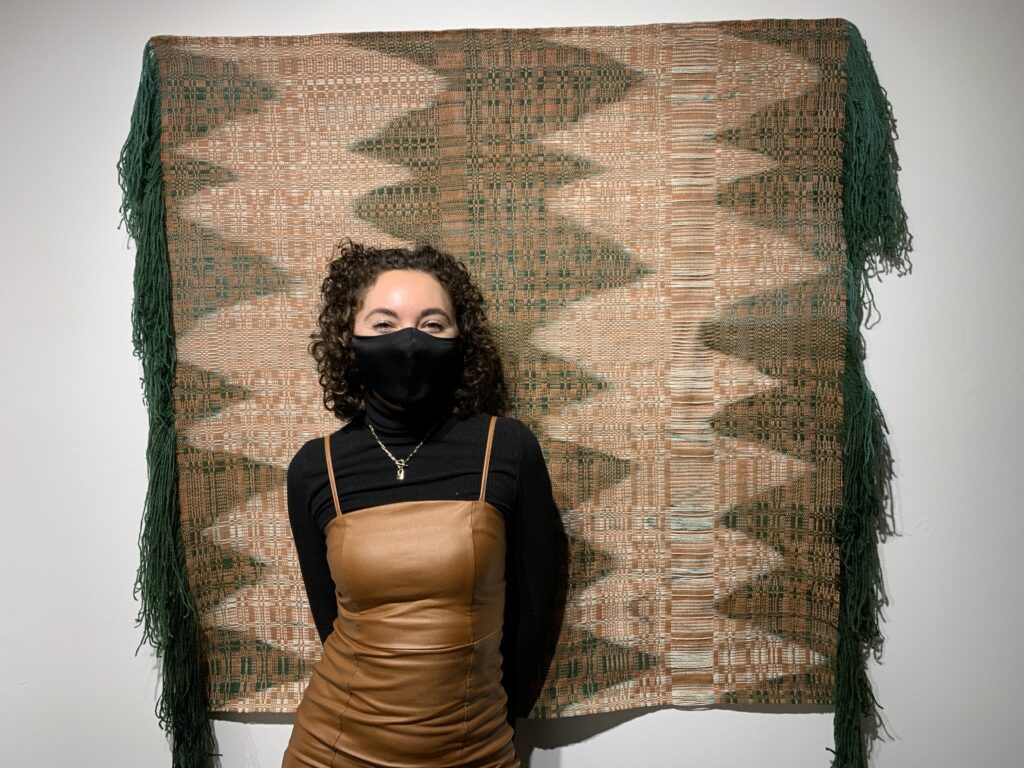
Sounds of Life features 5 weavings that are based on remembered sounds at specific locations, such as a car revving its engine outside of a warehouse. These weavings employ ikat, a traditionally Japanese dyeing technique in which a “band” of yarn is left undyed through tight binding, known as a resist. Evelyn Solis, the weaver, can shift this undyed band of yarn throughout her weaving, creating a shift and movement, similar to sound waves. These five weavings all use the same materials: linen as the warp and the tabby pick, and the ikat dyed wool as the pattern pick. Pick here refers to one singular line of weft; a pattern pick is a bolder, thicker line that stands out against a tabby pick which usually blends into the background.
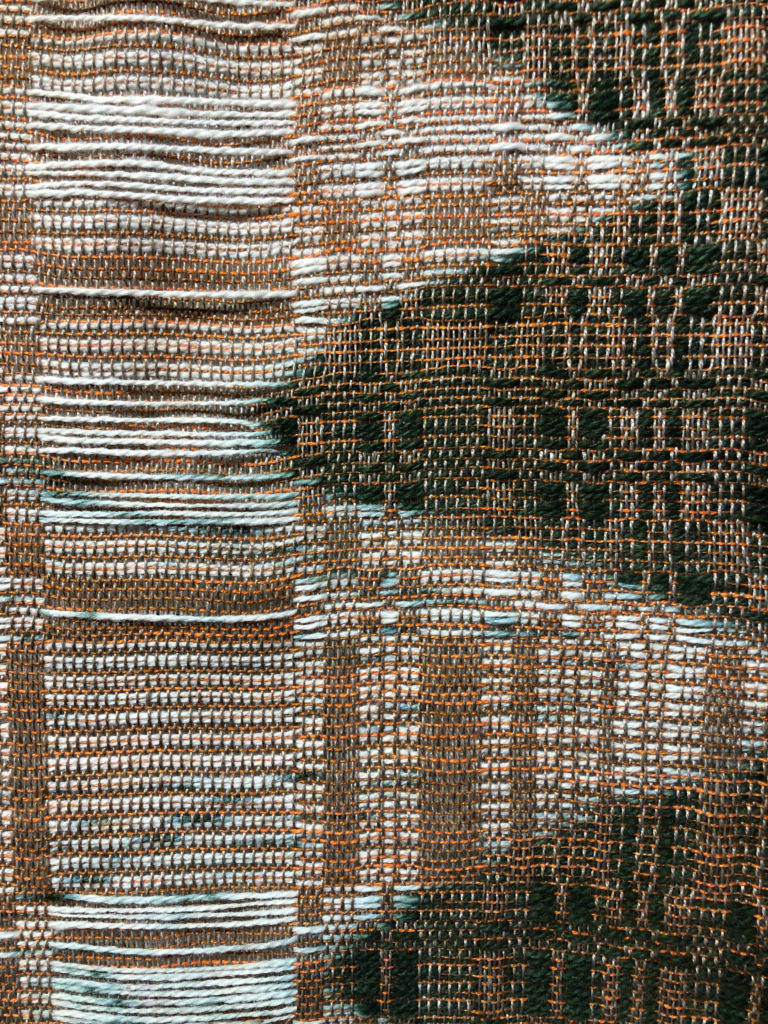
The first weaving, Driving Home, is 62 by 36 inches and employs browns and greens as well as the traditional white resist. The wave appears to be constant and steady, resembling sound waves generated from the slow, loud, constant rumbling of a car. The colors employed seem to hint at a landscape of greenery and potentially brown fields and trees. However, one thing that she does not address in her statement is the loom-controlled pattern. It seems to merely sit on the surface of the sound waves. The pattern appears somewhat as a screen that must be looked through to see the wave. I wonder how a pattern like a twill that the wave follows could have enhanced the effects of Driving Home.
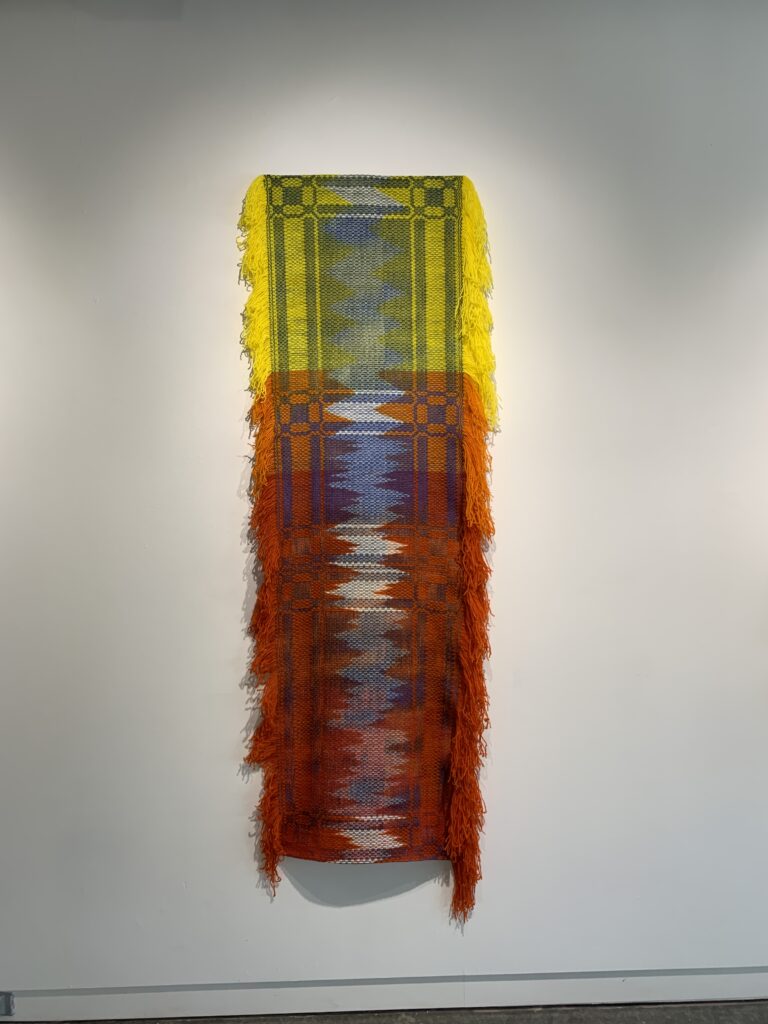
Take a Walk With Me is 71 by 20.5 inches. It is made of yellow, red, orange, and green. Take a Walk With Me Is far more sporadic than Driving Home. It somewhat graduates from its initial red with intense shifts to a calmer orange, to yellow with the calmest shifts. I read it almost like listening to a song with headphones, and when the song ends, you listen to sounds around you, maybe some cars driving and birds singing. Take a Walk With Me also seems to address the loom-controlled pattern. Its soundwaves are constrained to the inside of the rectangular pattern. The pattern actually helps segment the soundwaves, and the nature of the ikat shifts seems to follow the pattern, rather than the color. The pattern also compliments the size of the weaving. The smaller rectangles in the pattern break up the length into more manageable chunks to be viewed, and they shorten the overall length that the eye must look at first.
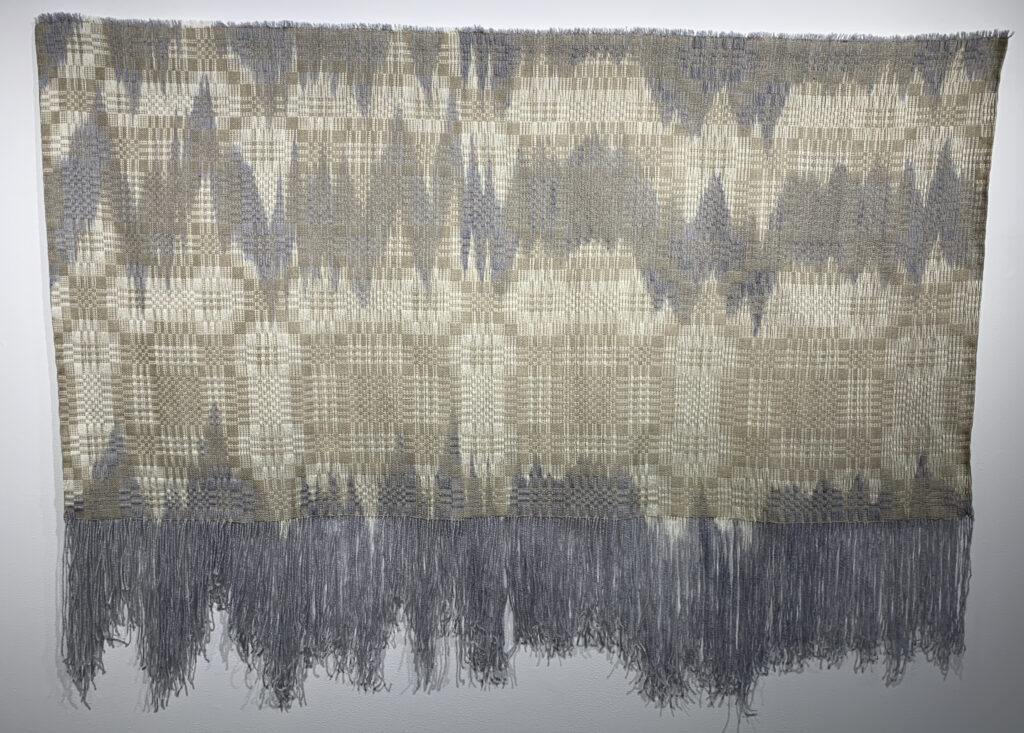
Warehouse is 62 by 36 inches. It is mostly neutrals like grays, beiges, and again the traditional white. Warehouse most definitely resembles the “white noise” that it is based on, the constant clanging of machinery and the movement of merchandise. These colors seem to hint at the mundanity of the noise, maybe also the lackluster appearance of a corporate, dread-filled warehouse. Warehouse’s patterns are also somewhat lackluster, but they frame the shifting waves beautifully. It almost creates three waves, as the gray between the two white resists being read as a wave itself. The pattern here is much more regular than the last two weavings as well, its seemingly perfect symmetry hinting to its corporate connotations.
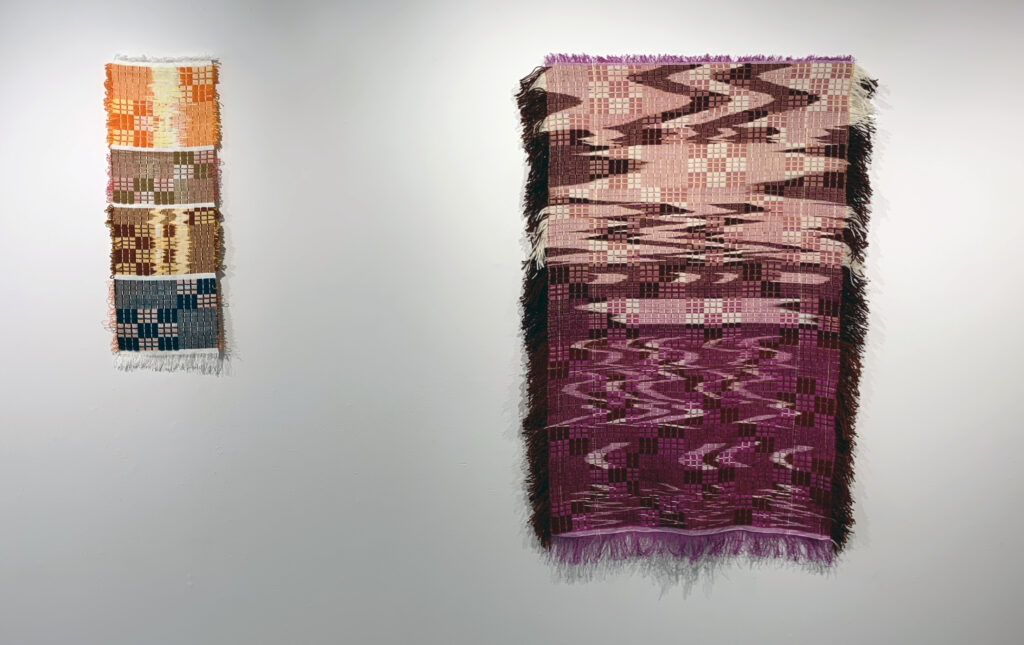
Thesis Proposal, 2021, 48.5”x 36.5”, Dyed linen and Dyed wool
The last two weavings in the exhibition were initially made as samples and proposals for Solis’s thesis exhibition. In these samples, Solis plays with the number of resists, how the resist interacts with the pattern and the shifting of the resist. Her proposal piece has dynamic shifting, and huge resists, which are lovely, but don’t read as sound waves in the same way as her other pieces. Warehouse, Take a Walk With Me, and Driving Home all are lovely uses of ikat and weaving to represent the sounds of Solis’s environment. Overall, I am excited to see where Evelyn Solis’s next work goes.
